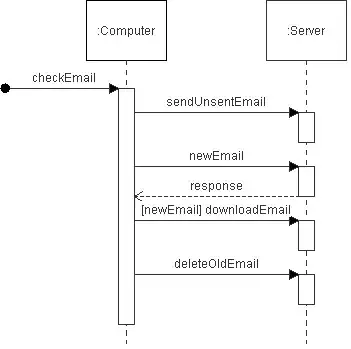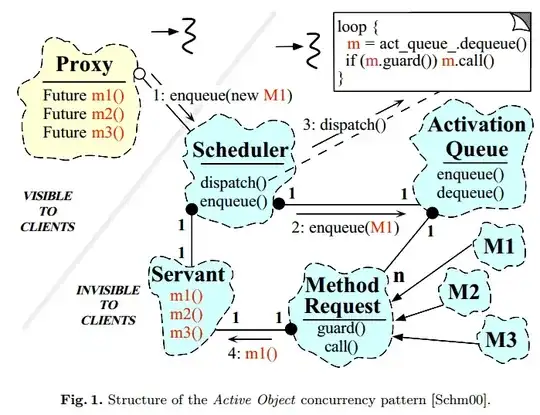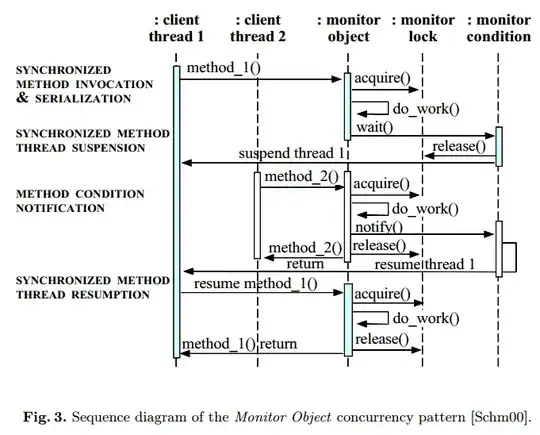For single-threaded applications I like to use class diagrams to get an overview of the architecture of that application. This type of diagram, however, hasn’t been very helpful when trying to understand heavily multi-threaded/concurrent applications, for instance because different instances of a class "live" on different threads (meaning accessing an instance is save only from the one thread it lives on). Consequently, associations between classes don’t necessarily mean that I can call methods on those objects, but instead I have to make that call on the target object's thread.
Most literature I have dug up on the topic such as Designing Concurrent, Distributed, and Real-Time Applications with UML by Hassan Gomaa had some nice ideas, such as drawing thread boundaries into object diagrams, but overall seemed a bit too academic and wordy to be really useful.
I don’t want to use these diagrams as a high-level view of the problem domain, but rather as a detailed description of my classes/objects, their interactions and the limitations due to thread-boundaries I mentioned above.
I would therefore like to know:
- What types of diagrams have you found to be most helpful in understanding multi-threaded applications?
- Are there any extensions to classic UML that take into account the peculiarities of multi-threaded applications, e.g. through annotations illustrating that
- some objects might live in a certain thread while others have no thread-affinity;
- some fields of an object may be read from any thread, but written to only from one;
- some methods are synchronous and return a result while others are asynchronous that get requests queued up and return results for instance via a callback on a different thread.


